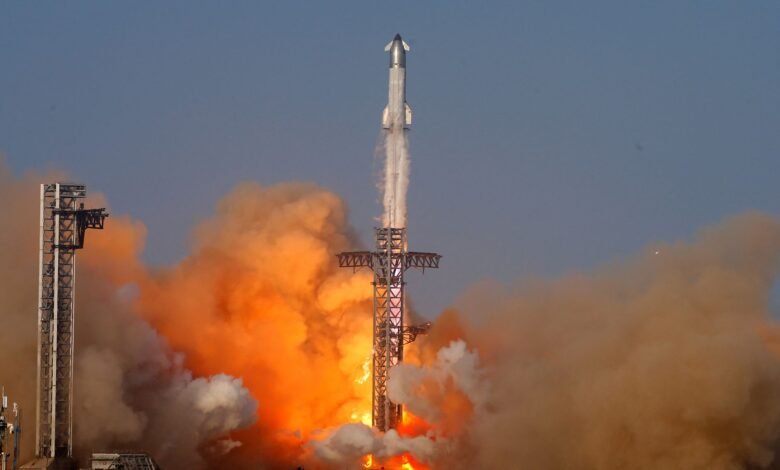SpaceX Starship Test Flight Faces Re-entry Setbacks — What Happened?
On May 27, 2025, SpaceX launched its ninth Starship test flight from Starbase, Texas — a mission that achieved key milestones but ultimately ended with the spacecraft breaking up during re-entry.

Key Milestones Achieved in the Launch
Despite the mission’s abrupt end, several key objectives were successfully met:
1. First Reuse of the Super Heavy Booster
This mission marked the first-ever reuse of a Super Heavy booster, demonstrating SpaceX’s growing focus on rocket reusability — a critical step toward reducing space travel costs.
2. Smooth Liftoff and Stage Separation
The rocket lifted off without issue and achieved a successful stage separation, propelling the upper stage further into space than previous flights.
Payload Deployment Issue
One of the mission goals was to simulate satellite deployment by releasing eight mock Starlink satellites. However, a malfunction in the payload door mechanism prevented the release, resulting in a partial mission failure.
Challenges Faced During Re-entry
1. Propellant Leak
During the re-entry phase, the spacecraft experienced a propellant leak, which led to a sudden drop in main tank pressure.
2. Loss of Stability and Breakup
Due to the leak, the spacecraft lost stability, began spinning uncontrollably, and broke apart during descent over the Indian Ocean before completing its re-entry process.
Limited Data on Heat Shield Performance
SpaceX aimed to collect data on a newly designed heat shield system to evaluate its performance under extreme atmospheric conditions. However, the early disintegration of the upper stage limited their ability to gather meaningful results from this test.
Importance of the Test and Next Steps
Although the mission did not go entirely as planned, SpaceX still views it as a significant step forward. Each test flight provides essential data to refine systems and improve spacecraft reliability.
What Comes Next:
-
Design improvements for the propellant system and payload deployment mechanism
-
Continued focus on heat shield durability
-
Further collaboration with the Federal Aviation Administration (FAA) to meet safety regulations for future launches
SpaceX’s Long-Term Vision
SpaceX remains committed to developing a fully reusable Starship system capable of carrying large payloads and humans to the Moon, Mars, and beyond. These test flights are crucial to achieving Elon Musk’s goal of making interplanetary travel a reality by the end of the decade.





